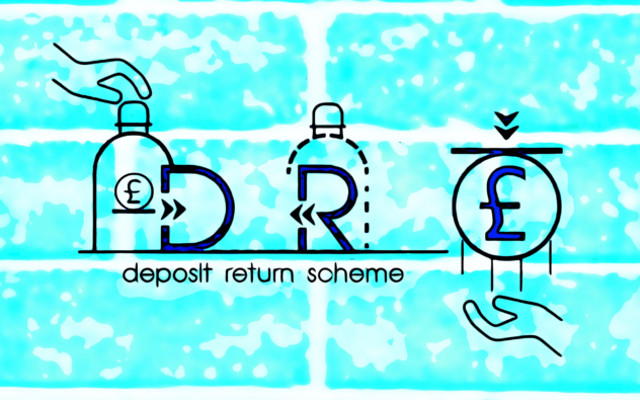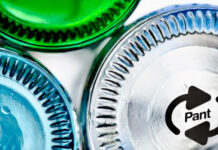DepositReturn Schemes (DRS) for single-use beverage packaging have always been opposed by the beverage industry because of concerns that they will reduce sales, due to increased management costs and higher retail prices. An unfounded concern, according to the study‘The Impact of Deposit Return Systems on Beverage Sales‘ by Container Recycling Institute (CRI) and Reloop, which analyzes a dozen case studies. (1)
DRS repository systems, impact analysis
The two organizations measured the impact of the DRS by comparing the trend in per capita volumes of beverages sold before and after the introduction or implementation of the deposit system in a dozen countries (2000-2021).
Market data were provided by GlobalData PLC or the manufacturers themselves. And they show a fluctuation in sales unrelated to DRS deposit systems. These systems, as we have seen, charge a surcharge on the selling price of the product for an amount recoverable by the buyer by placing the empty packaging in the appropriate containers. A solution that drastically reduces the dispersion of single-use containers into the environment and encourages their inclusion in the recycling system, as the Comuni Virtuosi in Italy remind us.
Scandinavian countries
Systems analyzed include the Scandinavian countries, which are at the forefront of waste management for recycling purposes in Europe.
In Sweden in 2010 the national DRS operator doubled the size of the deposit for aluminum cans with the aim of improving recycling rates. Immediately after the increase (the first in 23 years) there was a slight decline in sales. Blame the more expensive DRS? Not really, considering that the same was true in neighboring Norway, which had made no changes to its DRS. A decline in sales in Sweden had, moreover, occurred between 2003 and 2004, with no change in the DRS.
In Norway, the deposit system for single-use cans and PET plastic bottles was implemented in 1999. In 2018, deposits were increased to help drive up return rates. The amount increased from NOK 1 to NOK 2 (about €0.20) for containers up to 0.5L, and from NOK 2.50 to NOK 3 (about €0.30) for larger containers. Per capita sales remained relatively stable in the period immediately following the increase in deposits, while they increased in Scandinavian neighbors Denmark and Finland. However, sales in Norway had been declining for several years before the deposit increase. Within about a year of the deposit increase, moreover, sales returned to growth, increasing in the years 2019-2021 at a faster pace than neighboring countries.
Finland introduced its DRS for single-use containers in a staggered approach: cans in 1996, PET bottles in 2008, and single-use glass in 2012. Sales figures for packaged beer and soft drinks remained unchanged with the inclusion of PET bottles, then dropped in 2011, a year before the subsequent expansion of the DRS to glass, similarly to Denmark and Norway (which does not include single-use glass in its DRS).
Denmark introduced its DRS in 2002. In 2005 he expanded it to include spirits, soft drinks, cider and energy drinks, and in the following year (2005-2006) sales increased. In 2008, the DRS was extended to non-carbonated beverages such as mineral water, lemonade and iced tea. Sales declined from 2006 to 2010, as did sales in neighboring Norway, which made no changes to its system during that period.
Croatia
Croatia’s deposit system dates back to 2006 and includes single-use plastic, metal and glass beverage containers of at least 200 ml, for which a deposit of HRK 0.50 (about € 0.07) is set.
Sales of beverages remained on the rise in the year following the introduction of the deposit system, only to decline around 2008, as in neighboring Hungary, Bosnia-Herzegovina and Slovenia, which lacked a DRS.
Baltic countries, Lithuania
Lithuania implemented its single-use beverage deposit system in February 2016. Under the legislation, consumers pay a deposit of €0.10 when they buy beverages packaged in disposable glass, plastic and metal containers between 0.1 and 3 liters in size.
Sales of packaged beer and soft drinks declined around 2015, a year before the introduction of the DRS, but quickly recovered after 2017 (sales increased in both years after the decline), suggesting that factors other than storage were at play on the trend. Confirming this, a similar decline in sales had occurred between 2011 and 2013, years before the deposit was introduced.
Estonia
Estonia’s DRS for single-use containers has applied since 2005 to a variety of beverages packaged in cans, plastic and glass bottles. The introduction of this system did not affect sales, which were growing until about 2007.
The deposit on cans and small PET bottles was originally EEK 0.50 (€0.03), while the deposit for large PET bottles and glass was EEK 1 (€0.06). Subsequent increases in deposits in 2010, 2011, and 2015 to the current € 0.10 for all materials were accompanied by changes in ordinary sales. First, a decline from 2007 to 2009, then a recovery from 2009 to 2011 (thus with no negative effects attributable to the 2010 deposit increase), and again a slight decline in sales from 2011 to 2012-when the deposit was increased for the second time-and in 2015, at the last deposit increase. At these two junctures, however, the drop in sales was most pronounced in Lithuania, then without DRS.
Germany
In early 2003, the German government implemented a mandatory DRS for single-use beverage containers, with a deposit of €0.25 for cans, PET bottles, and glass bottles with wire capacity to 3L.
The amount of the deposit was the highest ever established in the establishment of a DRS. Despite this, per capita sales of non-alcoholic beverages and packaged beer in all types of containers always increased, even when they decreased in neighboring countries such as the Czech Republic and Belgium, which do not have a DRS.
Conclusions
Other DRS systems are analyzed in the study: the one started in 1972 in Oregon, then in California (since 1986), in the Canadian province of Alberta (2000), and in six Australian states and Territories (since 1977). Seven studies similar to the one under review by subject are also retraced, but based on predictive studies instead of actual data.
The study’s authors conclude by highlighting the three key findings that should nurture informed discussion in the institutional setting as well.
1) None of the case studies provide conclusive evidence to suggest that the introduction or expansion of a DRS caused a decline in beverage sales. Sales fluctuations observed in the case studies were within the normal range and aligned with regional trends.
2) In addition to storage, various independent or cumulative factors can affect beverage sales, including seasonal temperatures, economic conditions, sales tax rates, the existence or absence of DRS in neighboring jurisdictions, the location of retail hubs, and the pricing practices of beverage retailers and distributors.
3) Claims of a causal relationship between DRS implementation and reduced beverage sales should be carefully examined, as they often come from studies based on misleading and erroneous assumptions.
Notes
(1) Susan V. Collins Jenny Gitlitz Samantha Millette Clarissa Morawski Jason Wilcox. The impact of deposit return systems on beverage sales. Reloop, CRI. July 2023. https://www.container-recycling.org/images/2023/Final%20CRI-Reloop%20DRS%20Impact%20on%20Beverage%20Sales%20Report%20July%202023.pdf
Professional journalist since January 1995, he has worked for newspapers (Il Messaggero, Paese Sera, La Stampa) and periodicals (NumeroUno, Il Salvagente). She is the author of journalistic surveys on food, she has published the book "Reading labels to know what we eat".








